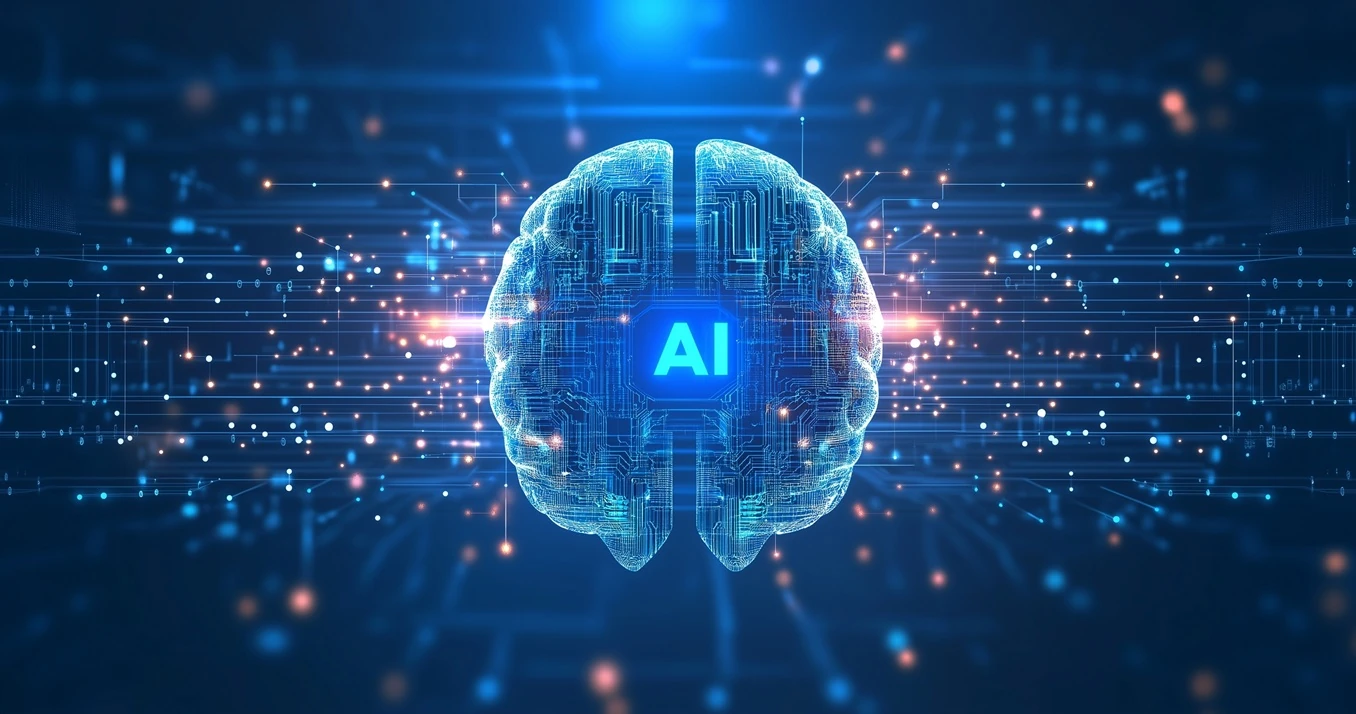AI and Data Privacy: Best Practices for Protecting Your Information
Estimated reading time: 10 minutes
Key Takeaways
- AI and data privacy are critical in safeguarding personal information in AI-driven systems.
- Implementing strategies like anonymisation and encryption can prevent data misuse.
- Balancing AI innovation with strict privacy standards is essential for maintaining user trust.
- Compliance with data privacy laws helps avoid legal repercussions and financial losses.
- Emerging technologies and continuous adaptation are vital for future AI privacy and security.
Table of contents
- AI and Data Privacy: Best Practices for Protecting Your Information
- Understanding AI and Data Privacy
- Key Challenges in AI Data Privacy
- Best Practices for AI Data Privacy and Protection
- AI Privacy and Security Technologies
- Regulatory Landscape in Australia
- Future Trends in AI Privacy and Security
- Conclusion
- Additional Resources
Understanding AI and Data Privacy
AI and data privacy refer to the practices and measures put in place to protect personal information within AI systems. AI relies on large datasets to train machine learning models and make accurate predictions. These datasets often contain sensitive personal information, making AI data privacy essential to prevent misuse or unauthorized access.
AI data privacy involves various strategies to safeguard data, ensuring that personal information remains confidential and secure. This includes techniques like anonymisation, encryption, and implementing strict access controls to protect individual identities and sensitive details.
AI and data privacy are intertwined because the effectiveness of AI systems depends on the quality and security of the data they use. Robust data protection measures are necessary to maintain the integrity of AI functionalities and to comply with regulatory standards.
Protecting data in AI applications is vital for several reasons:
- Maintaining User Trust: Users need to feel confident that their personal information is secure.
- Regulatory Compliance: Adhering to data privacy laws helps avoid legal repercussions.
- Preventing Data Breaches: Protecting data reduces the risk of unauthorized access and potential misuse.
Neglecting data privacy in AI can lead to severe consequences, including loss of trust, legal penalties, and financial losses. Therefore, understanding and implementing AI data privacy is essential for both businesses and individuals.
Key Challenges in AI Data Privacy
Ensuring AI data privacy comes with several challenges that need to be addressed to protect personal information effectively.
Data Collection and Consent Issues
One of the primary challenges is obtaining informed consent for data usage in AI. Often, data is collected without explicit permission from users, raising ethical and legal concerns. Users may not be fully aware of how their data will be used, leading to privacy violations and loss of trust.
Risks of Data Breaches and Unauthorized Access
AI systems are susceptible to data breaches and unauthorised access due to vulnerabilities in their infrastructure. These breaches can expose sensitive personal information, compromising user privacy and leading to potential misuse of data. Protecting data reduces the risk of unauthorised access and potential misuse.
Balancing AI Innovation with Privacy Concerns
There’s a constant tension between advancing AI technologies and maintaining strict privacy standards. While innovation drives AI’s capabilities, it can sometimes compromise privacy if not managed properly. Balancing innovation with privacy is crucial to ensure that AI developments do not come at the expense of personal data security.
Case studies have shown instances where the push for AI advancements led to inadequate privacy protections, resulting in data misuse and erosion of user trust.
Best Practices for AI Data Privacy and Protection
Implementing effective privacy AI measures is essential to protect personal data within AI systems. Here are some best practices to ensure AI data privacy and security:
Privacy AI Techniques
Data Anonymisation and Pseudonymisation
Data anonymisation involves removing or altering personal identifiers from datasets, making it difficult to trace information back to individuals. Pseudonymisation replaces private identifiers with fake identifiers or pseudonyms, adding an extra layer of protection.
These methods help protect individual identities while still allowing AI systems to utilize the data for training and analysis.
Implementing Differential Privacy in AI Models
Differential privacy adds “noise” to datasets, ensuring that individual records cannot be easily identified. This technique protects personal information even when data is shared or analysed, maintaining privacy without significantly compromising the utility of the data.
For example, Google uses differential privacy to enhance the privacy of its users while still benefiting from aggregated data insights.
Data Governance
Establishing Clear Data Policies and Protocols
Creating comprehensive data governance frameworks is essential for managing data effectively. This includes outlining clear policies and protocols for data collection, storage, usage, and sharing.
Transparency in data usage helps build trust with users and ensures that data handling practices comply with privacy regulations.
Ensuring Transparency in Data Usage
Maintaining transparency involves clearly informing users about how their data is used within AI systems. Transparent data usage helps users make informed decisions about sharing their information and fosters a culture of accountability.
Security Measures
Encryption Methods for Data at Rest and in Transit
Encryption is a critical security measure that protects data both when it is stored (at rest) and during transmission (in transit). Strong encryption techniques ensure that even if data is intercepted or accessed without authorization, it remains unreadable and secure.
Access Controls and Authentication Mechanisms
Implementing robust access controls and authentication mechanisms prevents unauthorised individuals from accessing sensitive data. These measures include using multi-factor authentication, role-based access, and regular monitoring of access logs to detect and prevent unauthorized access.
Regular Audits and Compliance
Conducting Periodic Privacy Impact Assessments
Regular privacy impact assessments help evaluate the privacy implications of AI systems. These assessments identify potential risks and vulnerabilities, allowing organisations to implement necessary safeguards proactively. OAIC has developed a useful privacy impact assessment tool that can be found here.
Adhering to Australian Data Privacy Laws and Regulations
Compliance with relevant data privacy laws, such as the Privacy Act 1988 and the Australian Privacy Principles, is crucial for organizations using AI. These regulations mandate strict data privacy practices, ensuring that personal information is handled responsibly and ethically.
AI Privacy and Security Technologies
Various tools and technologies enhance AI privacy and security, providing robust protection for personal data within AI systems.
Overview of Tools and Technologies
AI privacy and security technologies include encryption tools, access control systems, and advanced monitoring solutions that work together to protect data from breaches and unauthorised access.
Machine Learning Techniques for Detecting and Preventing Data Breaches
Machine learning can be leveraged to detect and prevent data breaches in real-time. These techniques analyse patterns and anomalies in data access and usage, identifying potential threats before they escalate.
For instance, AI-driven security systems can monitor network traffic and flag unusual activities, enabling swift responses to potential breaches.
Regulatory Landscape in Australia
Understanding the regulatory landscape is essential for ensuring AI data privacy and compliance in Australia.
Summary of Australian Data Privacy Laws Relevant to AI
The Privacy Act 1988 and the Australian Privacy Principles (APPs) are key regulations governing data privacy in Australia. These laws mandate that organizations handle personal information responsibly, ensuring its protection and appropriate use within AI applications.
Compliance Requirements for Businesses Using AI
Businesses deploying AI must adhere to several compliance requirements, including:
- Obtaining informed consent for data collection and usage.
- Implementing robust data security measures.
- Ensuring transparency in data handling practices.
- Conducting regular privacy impact assessments.
Compliance strategies may involve adopting comprehensive data governance frameworks, training employees on data privacy, and utilizing privacy-enhancing technologies.
Impact of Recent Legislation on AI Data Privacy Practices
Recent legislative changes have further emphasized the importance of data privacy in AI. Organisations must stay informed about evolving laws to ensure ongoing compliance and avoid legal repercussions.
For example, updates to the Privacy Act may introduce stricter data handling requirements, necessitating changes in how businesses manage and protect AI data.
Future Trends in AI Privacy and Security
As AI technology evolves, so do the strategies and tools for ensuring AI and data privacy. Here are some future trends to watch:
Emerging Technologies Enhancing AI and Data Privacy
New technologies are emerging to better protect AI and data privacy. Innovations such as federated learning, which allows AI models to train on decentralized data without transferring personal information, promise to enhance privacy while maintaining AI effectiveness.
Predictions for the Evolution of AI Privacy and Security Measures
Experts predict that AI privacy and security measures will become more sophisticated, integrating advanced encryption, automated compliance tools, and AI-driven security systems to proactively address emerging threats.
Continuous advancements in privacy-preserving technologies will enable more secure and trustworthy AI applications, fostering greater public confidence.
Preparing for Future Regulatory Changes
Businesses must stay ahead of upcoming regulatory changes by:
- Monitoring legislative developments related to AI and data privacy.
- Adopting flexible data governance frameworks that can adapt to new laws.
- Investing in continuous training and education on data privacy practices.
Proactive measures ensure that organisations remain compliant and can swiftly adjust to regulatory shifts, minimizing disruptions and maintaining data privacy standards.
Conclusion
AI and data privacy are essential components of the modern digital landscape. As AI systems become more pervasive, safeguarding personal information is paramount to maintaining user trust and complying with regulatory standards.
Businesses and individuals alike must prioritize AI privacy and security by implementing best practices such as data anonymisation, encryption, and robust data governance. Regular audits and adherence to data privacy laws further strengthen these protections, ensuring that AI technologies are used responsibly and ethically.
By adopting these strategies, organizations can harness the power of AI while respecting and protecting individual privacy. Continuous learning and adaptation to new privacy challenges will be crucial for building a secure and trustworthy AI-driven future.
Frequently Asked Questions
What is AI Data Privacy?
AI data privacy involves practices and measures to protect personal information within AI systems, ensuring data is used responsibly and securely.
Why is AI Data Privacy Important?
Ensuring AI data privacy maintains user trust, complies with regulatory standards, and prevents data breaches and misuse.
How Can Businesses Ensure AI Data Privacy?
Businesses can ensure AI data privacy by implementing techniques like anonymization and encryption, establishing clear data governance policies, and adhering to relevant privacy laws.
What Are the Challenges of AI Data Privacy?
Challenges include obtaining informed consent, preventing data breaches, balancing innovation with privacy, and complying with evolving regulations.
What Future Trends Are Emerging in AI Data Privacy?
Emerging trends include federated learning, advanced encryption techniques, AI-driven security systems, and proactive compliance strategies to adapt to regulatory changes.



